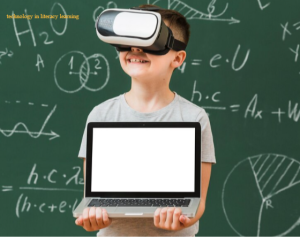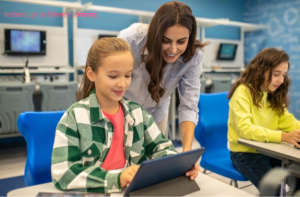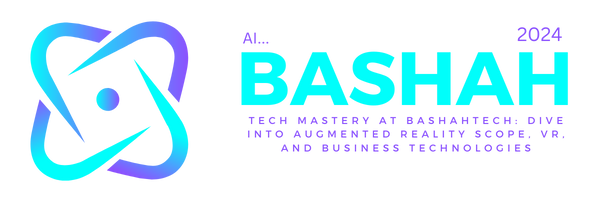
Technology in Literacy Learning: Bridging Gaps and Unlocking Potential
In the dynamic landscape of education, the infusion of technology into literacy learning has become integral to encouraging a climate that draws in and enables students. This article delves into the evolution of literacy learning, the benefits of incorporating technology, standard technologies used, challenges faced, strategies for effective integration, success stories, future trends, and recommendations for educators and institutions.

Definition of technology in literacy learning
In the 21st century, technology in literacy learning refers to integrating digital tools and resources to enhance reading and writing skills among students. It encompasses various applications, from interactive e-books to educational apps designed to make learning more engaging.
Importance of integrating technology in education
As the world becomes increasingly digital, the traditional methods of literacy learning need to evolve. Integrating technology aligns education with the current digital landscape and provides students with the skills they need to thrive in a technology-driven society.
Evolution of Literacy Learning
Traditional methods
Historically, literacy learning primarily relied on conventional methods such as textbooks, chalkboards, and paper assignments. While these methods were effective, they often needed more interactive and personalized elements that technology can bring.
Emergence of technology in education
The education sector saw a paradigm shift with the advent of computers, the internet, and portable devices. Smart classrooms, online resources, and interactive platforms entered the scene, offering new avenues for educators to enhance literacy learning.
Benefits of Technology in Literacy Learning
Technology provides a dynamic and interactive learning environment, capturing students’ attention and fostering a genuine interest in literacy. Interactive lessons, multimedia content, and gamified elements make learning enjoyable and effective.
Personalized learning experiences
Digital tools allow educators to tailor literacy lessons to individual student needs. Adaptive learning platforms and personalized feedback mechanisms ensure students progress at their own pace, addressing their unique strengths and weaknesses.
Accessibility and inclusivity
Technology bridges geographical and socioeconomic gaps, ensuring students from diverse backgrounds can access quality literacy resources. It also accommodates various learning styles, making education more inclusive for students with different needs.
Common Technologies in Literacy Learning
E-books and digital libraries
The proliferation of e-books and digital libraries has revolutionized access to reading materials. Students can now explore various texts at their fingertips, promoting independent reading and exploration.
Educational apps and games
Engaging educational apps and games makes learning fun and interactive. These tools not only enhance reading and writing skills but also cultivate students’ critical thinking and problem-solving abilities.
Interactive whiteboards
Interactive classroom whiteboards facilitate dynamic presentations, collaborative learning, and real-time interaction. These tools encourage active participation, making literacy lessons more immersive and memorable.
Challenges in Implementing Technology
Digital divide
Despite the benefits, the digital divide poses a challenge, as not all students have equal access to technology. Ensuring equitable access is crucial for preventing disparities in literacy learning outcomes.
Privacy concerns
Technology integration raises concerns about the privacy and security of student data. Educators and institutions must implement robust measures to safeguard sensitive information.
Overreliance on technology
While technology enhances learning, an overreliance on it may have adverse effects. Striking a balance between traditional teaching methods and technology is essential to maintain a holistic approach to education.

Strategies for Effective Integration
Professional development for educators
Empowering educators with the necessary skills and knowledge through professional development programs is essential for successful technology integration. This ensures that teachers can effectively utilize digital tools in their teaching practices.
Balancing technology and traditional methods
A practical approach involves integrating technology strategically, supplementing rather than replacing traditional teaching methods. This balance ensures that students benefit from the advantages of both approaches.
Regular assessment and feedback
Continuous assessment and feedback mechanisms help educators gauge the effectiveness of technology integration. Changes can be made given constant information, ensuring ongoing improvement in literacy learning outcomes.
Success Stories in Technology Integration
Numerous schools and institutions have successfully integrated technology into their literacy programs. Case studies highlight the positive impacts on student engagement, performance, and overall learning experiences.
Positive impacts on student outcomes
Evidence suggests that technology integration positively influences literacy learning outcomes. Improved reading comprehension, writing proficiency, and critical thinking skills are among the key benefits observed in students exposed to well-implemented technology.
Future Trends in Technology and Literacy Learning
Artificial intelligence in education
Artificial intelligence (AI) integration is on the horizon, promising personalized learning experiences that adapt to each student’s unique needs. AI-powered tools can provide targeted support and interventions, further enhancing literacy skills.
Virtual and augmented reality
Virtual and increased reality advances offer vivid opportunities for growth, transporting students to different worlds and historical periods. These technologies can potentially revolutionize how students engage with literature and language.
Gamification of literacy learning
Gamification, incorporating game-like elements into education, is gaining traction. This approach leverages the motivational aspects of games to enhance literacy learning, making it both enjoyable and effective.
Recommendations for Educators and Institutions
Staying updated with technological advancements
Continuous professional development and staying abreast of emerging technologies are essential for educators. This enables them to make informed decisions about integrating the latest tools into literacy learning.
Collaborative learning and sharing best practices
Educators and institutions should foster a culture of collaboration, sharing successful strategies and best practices for technology integration. This collective approach contributes to the continual improvement of literacy education.
Conclusion
In conclusion, technology in literacy learning is not just a tool; it’s a catalyst for transformation. Embracing the benefits of technology while addressing challenges is crucial for creating a balanced and effective learning environment. As we look toward the future, integrating artificial intelligence, virtual reality, and gamification holds immense potential for shaping the next generation of literate and tech-savvy individuals.
FAQs
How does technology enhance engagement in literacy learning?
Technology provides interactive and dynamic learning experiences, incorporating multimedia content, gamification, and personalized feedback to captivate students and make learning enjoyable.
What challenges does the digital divide pose in technology integration for literacy learning?
The digital divide creates inequalities in access to technology among students. Ensuring equitable access is crucial to prevent disparities in literacy learning outcomes.
How can educators balance traditional methods and technology in literacy education?
Educators can strike a balance by strategically integrating technology to supplement traditional methods. This approach ensures students benefit from both approaches without overreliance on technology.
What role does artificial intelligence play in the future of literacy learning?
Artificial intelligence promises personalized learning experiences, adapting to individual student needs. AI-powered tools can provide targeted support and interventions to enhance literacy skills.
Are there successful case studies of schools or institutions that have integrated technology into literacy programs?
Numerous case studies highlight the positive impacts of technology integration on student engagement, performance, and overall literacy learning experiences.

Leave a Reply